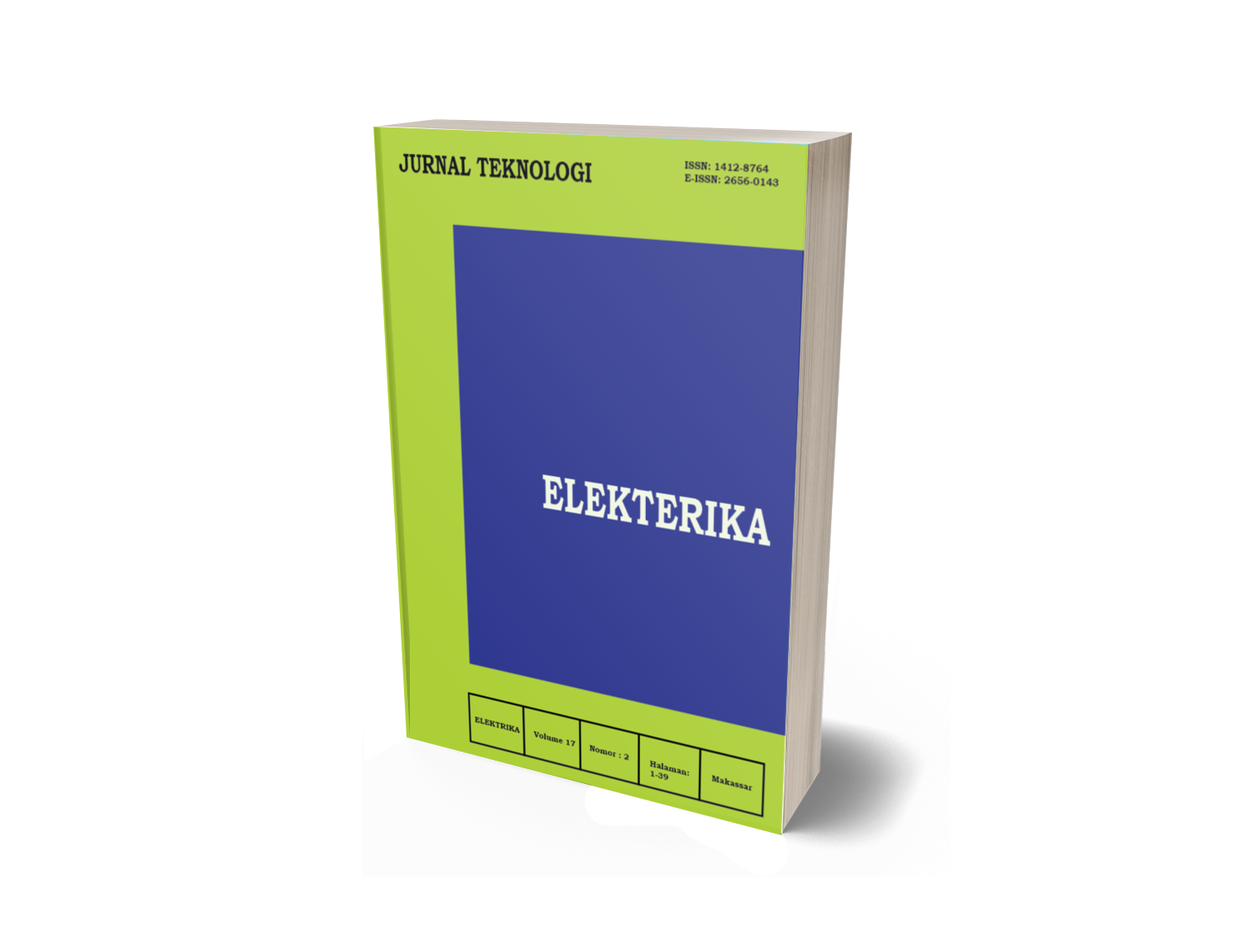Usage of Safety Helmet Warning System Using Deep Learning Method
DOI:
https://doi.org/10.31963/elekterika.v21i2.5103Keywords:
Safety Helmet, Deep Learning, YOLOv8, Object Detection, Real TimeAbstract
K3 Helmet Usage Warning System Using Deep Method Learning Algorithm YOLOv8 is a technological innovation that combines the advanced object detection method YOLOv8 (You Only Look Once version 8) with the needs of safety in the work environment, especially the use of K3 (Occupational Health and Safety) helmets. This research aims to improve compliance with the use of K3 helmets through an automation approach using Deep Learning technology.The YOLOv8 algorithm is used to detect whether individuals in the work area are wearing K3 helmets or not. The detection results will be processed by the system to provide automatic warnings if individuals do not wearing an OHS helmet according to safety regulations. The use of Deep Learning technology in this method enables fast and accurate detection, contributing to increased awareness and compliance with workplace safety policies.With proper implementation, the system is expected to help create a safer work environment and improve the safety of workers, making the workplace more compliant with established OHS standards.References
[1] A. Alsharef, A. Albert, I. Awolusi, and E. Jaselskis, “Severe injuries among construction workers: Insights from OSHA’s new severe injury reporting program,” Saf Sci, vol. 163, p. 106126, Jul. 2023, doi: 10.1016/j.ssci.2023.106126.
[2] A. S. B. Putra, E. D. Kusumawati, and D. Kartikasari, “Unpacking the Roots and Impact of Workplace Well-being: A Literature Review,” International Journal of Multidisciplinary Approach Research and Science, vol. 2, no. 01, pp. 312–321, Dec. 2023, doi: 10.59653/ijmars.v2i01.433.
[3] Y. Adiratna et al., Profil Keselamatan dan Kesehatan Kerja Nasional Indonesia Tahun 2022, Cetakan pertama. Jakarta Selatan: Kementerian Ketenagakerjaan Republik Indonesia, 2022.
[4] J. Wang and S. Razavi, “Network-Based Safety Leading Indicators for Safety Risk Analysis in Construction,” Proceedings of the Human Factors and Ergonomics Society Annual Meeting, vol. 63, no. 1, pp. 1787–1791, Nov. 2019, doi: 10.1177/1071181319631272.
[5] Z. Wang, Y. Wu, L. Yang, A. Thirunavukarasu, C. Evison, and
Y. Zhao, “Fast Personal Protective Equipment Detection for Real Construction Sites Using Deep Learning Approaches,” Sensors, vol. 21, no. 10, p. 3478, May 2021, doi: 10.3390/s21103478.
[6] A. Hayat and F. Morgado-Dias, “Deep Learning-Based Automatic Safety Helmet Detection System for Construction Safety,” Applied Sciences, vol. 12, no. 16, p. 8268, Aug. 2022, doi: 10.3390/app12168268.
[7] A. Moohialdin, F. Lamari, M. Marc, and B. Trigunarsyah, “A Real-Time Computer Vision System for Workers’ PPE and Posture Detection in Actual Construction Site Environment,” 2021, pp. 2169–2181. doi: 10.1007/978-981-15-8079-6_199.
[8] B. Widodo, H. A. Armanto, and E. Setyati, “Deteksi Pemakaian Helm Proyek Dengan Metode Convolutional Neural Network,” Journal of Intelligent System and Computation, vol. 3, no. 1, pp. 23–29, Apr. 2021, doi: 10.52985/insyst.v3i1.157.
[9] H. Nugraha, “ANALISIS PELAKSANAAN PROGRAM KESELAMATAN DAN KESEHATAN KERJA DALAM UPAYA MEMINIMALKAN KECELAKAAN KERJA PADA PEGAWAI PT. KERETA API INDONESIA (PERSERO),”
Coopetition : Jurnal Ilmiah Manajemen, vol. 10, no. 2, Nov. 2019, doi: 10.32670/coopetition.v10i2.43.
[10] A. KORKMAZ and M. T. AĞDAŞ, “Deep Learning-Based Automatic Helmet Detection System in Construction Site Cameras,” Bitlis Eren Üniversitesi Fen Bilimleri Dergisi, vol. 12, no. 3, pp. 773–782, Sep. 2023, doi: 10.17798/bitlisfen.1297952.
[11] J. Lee and S. Lee, “Construction Site Safety Management: A Computer Vision and Deep Learning Approach,” Sensors, vol. 23, no. 2, p. 944, Jan. 2023, doi: 10.3390/s23020944.
[12] R. Geng, Y. Ma, and W. Huang, “An improved helmet detection method for YOLOv3 on an unbalanced dataset,” in 2021 3rd International Conference on Advances in Computer Technology,Information Science and Communication (CTISC), IEEE, Apr. 2021, pp. 328–332. doi: 10.1109/CTISC52352.2021.00066.
[13] J. Wu, N. Cai, W. Chen, H. Wang, and G. Wang, “Automatic detection of hardhats worn by construction personnel: A deep learning approach and benchmark dataset,” Autom Constr, vol. 106, p. 102894, Oct. 2019, doi: 10.1016/j.autcon.2019.102894.
[14] M. Jakubec, E. Lieskovska, A. Brezani, and J. Tothova, “Deep Learning-Based Automatic Helmet Recognition for Two- Wheeled Road Safety,” Transportation Research Procedia, vol. 74, pp. 1171–1178, 2023, doi: 10.1016/j.trpro.2023.11.258.
[15] I. Goodfellow, Y. Bengio, and A. Courville, Deep learning. MIT press, 2016.
[16] J. Kang, S. Tariq, H. Oh, and S. S. Woo, “A Survey of Deep Learning-Based Object Detection Methods and Datasets for Overhead Imagery,” IEEE Access, vol. 10, pp. 20118–20134, 2022, doi: 10.1109/ACCESS.2022.3149052.
[17] M. Browne and S. S. Ghidary, “Convolutional Neural Networks for Image Processing: An Application in Robot Vision,” 2003, pp. 641–652. doi: 10.1007/978-3-540-24581-0_55.
[18] L. Alzubaidi et al., “Review of deep learning: concepts, CNN architectures, challenges, applications, future directions,” J Big Data, vol. 8, no. 1, p. 53, Mar. 2021, doi: 10.1186/s40537-021-
00444-8.
[19] A. Chandio et al., “Precise Single-stage Detector,” 2022.
[20] Y. Yin, H. Li, and W. Fu, “Faster-YOLO: An accurate and faster object detection method,” Digit Signal Process, vol. 102, p. 102756, Jul. 2020, doi: 10.1016/j.dsp.2020.102756.
[21] X. Lei, “OBJECT DETECTION FOR PERCEPTUALLY-
DEGRADED ENVIRONMENTS,” California State Polytechnic University, Pomona, 2020.
[22] J. Terven, D.-M. Córdova-Esparza, and J.-A. Romero-González, “A Comprehensive Review of YOLO Architectures in Computer Vision: From YOLOv1 to YOLOv8 and YOLO-NAS,” Mach Learn Knowl Extr, vol. 5, no. 4, pp. 1680–1716, Nov. 2023, doi: 10.3390/make5040083.
Downloads
Published
Issue
Section
License

This work is licensed under a Creative Commons Attribution-ShareAlike 4.0 International License.










